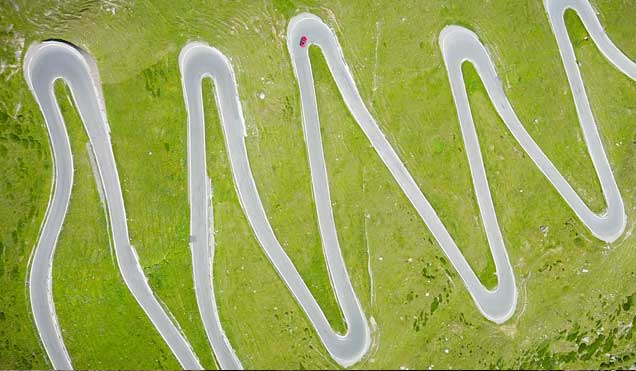
How’s Your Migration Going? UHouston-Metadata edition
The University of Houston has been the Bridge2Hyku project’s primary hub. We’re lucky enough to have received questionnaires from their metadata strategist and lead developer. Below is the response from Anne Washington, UH’s Metadata Services Coordinator. View Sean Watkins (Lead Repository Developer at UH)’s response HERE.
Original Platform?
CONTENTdm
New Platform?
Customized Hyrax instance.
Is this the Platform you had originally planned to migrate to?
No
If not, please elaborate on the reasons to pivot
Hyku seems to best serve a consorital use case. It provides the ability to, under one system manager, set up a multiple, separate repositories (tenants) with different administrators. The built-in repository functionality seem to serve an Institutional Repository (IR) use case over a cultural heritage materials use case. A couple of features we were particularly concerned about was the inability to easily customize metadata profiles and the absence of a bulk import option.
See Sean’s response for more information.
Broadly, How is your migration going?
The migration is going well. The process of designing new workflows, tools, and a new, integrated DAMS ecosystem has been ongoing for over 3 years. In that same time, we have revised our metadata application profile, assessed our existing digital collections for metadata and imaging inconsistencies, and have began work normalizing and revising metadata. All that is to say - it’s a long haul, but we’re making progress. The migration has a lot of moving parts and we are doing a good job of managing all of the different components, adjusting course when necessary.
What have been the biggest obstacles?
Thinking specifically about digital collection assessment and rework, not being able to automate metadata remediation because of the limitations of CONTENTdm has been an obstacle. We are fortunate to have scripts developed by Andrew Weidner which help automate the analysis of our collection metadata (many functions of which now exist in CDM Bridge), but once it’s time to actually modify the metadata, that work is done manually in the CONTENTdm Project Client item by item, collection by collection. This type of work is not necessarily required of every migration, but we made the decision to invest time in this assessment and normalization.
What’s gone well?
The steady forward momentum of the project is a testament to the great work being done by all of those involved. Behind this is really good collaboration and teamwork. If we didn’t have functioning teams doing this work, I’d imagine that we wouldn’t be doing as well. Both the team developing the DAMS and the team working on collection assessment and preparation for migration include stakeholders from different departments which ensure that different perspectives are considered. We’re all working hard together to achieve the same goal.
What customizations to the platform have you had to do?
See Sean’s response.
What feature are you most excited about having?
- Faceted browsing
- Custom metadata profile
- Infrastructure for linked data
- IIIF viewer
What lessons have you learned?
What advice would you share with those currently considering or beginning a migration?
I’m going to combine these.
Building what I mentioned before about what I think is going well, I think one of the lessons I’ve learned is how critical it is for a migration to be a collaborative process. A migration is not just about systems, it also affects lots of people. The advice I would give related to this is that it’s important to engage stakeholders in various ways throughout the process. Some stakeholders may just need to be kept in the loop about the general trajectory of work. Others more directly impacted by the work, should be part of the migration team(s) so that different perspectives can inform priorities and decisions.
Part of our migration process was to rework our metadata application profile. This work was done by a team that included representatives from the Metadata and Digitization Services Department and Special Collections. This collaborative process was really valuable and surfaced a lot issues with both the existing metadata profile and limitations of the new profile. I would encourage those that plan to rework their metadata application profile as part of their migration to do some legwork ahead of any kind of collaborative profile development. This might include gathering some data from across your collections to start to shape ideas for the new profile. It would also be helpful to come up with some general ideas of what you might want the profile to look like (in our case, we started from the DPLA Metadata Application Profile, version 4). A team going into this type of work can be easily stymied if there isn’t some kind of data or framework to respond to.
Another lesson learned is that, given that this is a long process, it can be sometimes be hard to keep momentum going and morale high. It’s really important to keep the migration goals clear and present to motivate yourself and others. Finding ways to visualize, reflect on, and celebrate progress is essential.
Institutional knowledge from people or documentation is really helpful. As you’re working through collections to assess and/or migrate, this information can sometimes help explain when and why particular decisions were made and can help inform migration decision. For example, you may be able to get rid of a metadata field that was created for a single collection and doesn’t particularly serve a significant purpose anymore.
Want to see the other B2H Partner’s migration questionnaires?
Go to our Migration Stories Page
Bridge2Hyku Partners UPDATES
partner-story lessons-learned case-study